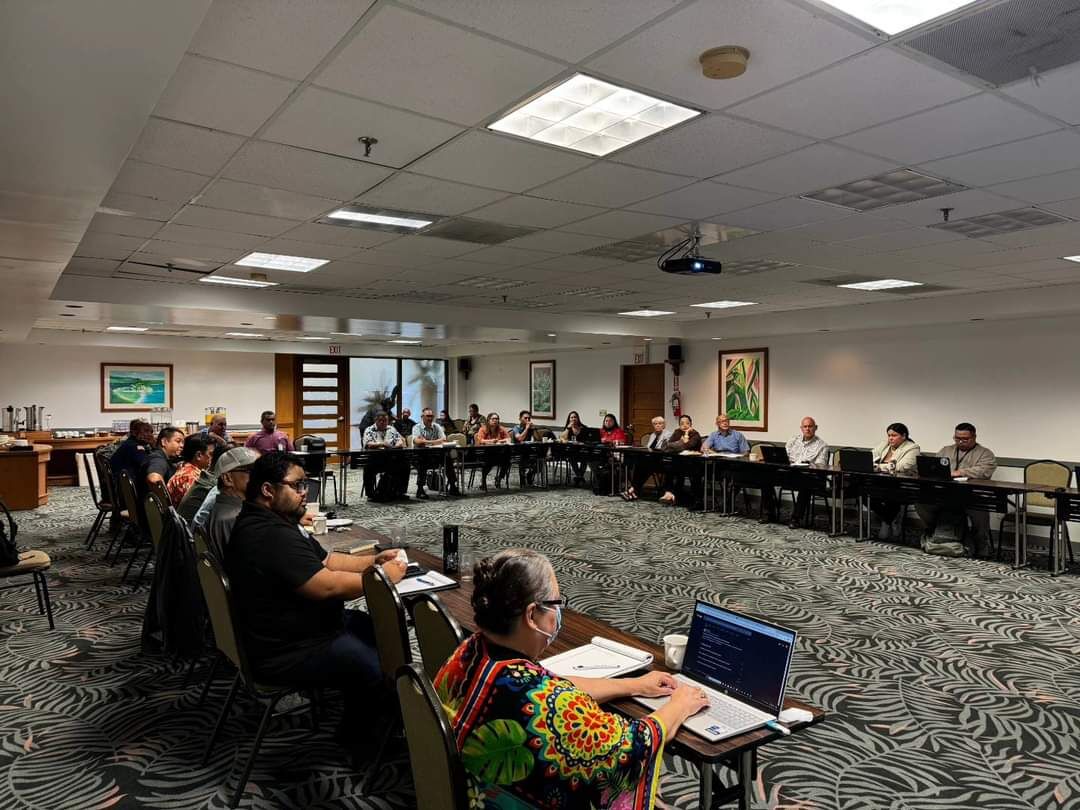HSEM, stakeholders brainstorm on disaster survivor housing
CNMI Homeland Security and Emergency Management met with 17 other members of the Disaster Housing Task Force to draw up plans for temporary housing should the CNMI face another Yutu or Soudelor during the Catastrophic Disaster Housing Plan Strategy Workshop last Aug. 1.
During the one-day workshop, members of the Office of the Governor, American Red Cross-NMI Chapter, Bureau of Environmental and Coastal Quality, CNMI Public School System, CNMI Voluntary Organizations Active in Disaster, Commonwealth Healthcare Corp., Council on Developmental Disabilities, Department of Community and Cultural Affairs, Department of Fire and Emergency Medical Services, Department of Lands and Natural Resources, Department of Public Safety, Department of Public Works, Rota Mayor’s Office, Saipan Mayor’s Office, Tinian Mayor’s Office, Northern Marianas College-University Center for Excellence in Development Disabilities, and the Northern Marianas Housing Corp. met with HSEM to lend their expertise in a draft to provide a ready temporary and long-term housing for disaster survivors.
HSEM public information officer Bernard Villagomez said although they’re still in the preliminary stages, the main goal of the workshop is to provide residents who have been displaced after natural disasters with immediate temporary housing while their homes are being rebuilt with the overall hope to boost resiliency in the CNMI should another disaster occur.
“From the 2020 Island Area Census for the CNMI we talked about total housing units, type of housing units, household size, year the structure was built, contract rent, local income, just a lot of data from that so that we can narrow down what the magnitude of the possibilities of how many people might need recovery. If a house was built 20 years ago and a major typhoon, for example, were to come, we have a general idea, based off that data, the amount of people that would be affected.”
Villagomez said they’re looking to finalize plans by September 2024, after which they would submit it to the Federal Emergency Management Agency for review.
Should the plan go through, several options and support are available for people who need housing after a disaster, both in the short term (immediately after the event) and in the long term (as they work toward permanent housing).
For short-term housing, survivors have the option to stay in rentals, vacant homes, or hotels, for a time while their damaged homes undergo repair and they can move back in.
“The CNMI DHTF may identify vacant public housing to place survivors. Vacant offices can be converted into temporary housing. If there is a presidential declaration, other federal assistance would be available. The FEMA Rental Assistance Program becomes available for up to 18 months. If rental units are not available, the FEMA Direct Housing Assistance Program can be considered. The FEMA Individuals and Households Program assistance and Small Business Administration low-interest loans are available for repair work.”
In cases where an individual needs long-term housing while rebuilding a home, Villagomez said under the program they will not only be able to have a place to stay, but they will also be on the radar should more federal assistance comes in to rebuild.
He outlined that in response to a disaster, homeowners and renters have several options for securing permanent housing. Homeowners may choose to rebuild using their own insurance claims, seek help from non-profit or faith-based groups, or obtain a mortgage.
However, some survivors may need federal assistance due to limited housing options or lack of resources to rebuild. Renters might also require additional help finding permanent housing. He shared that these individuals have the option to use their private insurance for damage assessments and payments, and local agencies like the CNMI DHTF might help identify rental housing.
“Other Hazard Mitigation Assistance are available to mitigate disaster impacts and build resilience. However, Hazard Mitigation Assistance funds cannot be used for an individual’s disaster recovery or mitigation needs that have been met through other assistance.”
Once an SBA disaster declaration is issued, low-interest homes and personal property loans become available to qualifying homeowners and renters for repairs and replacement of destroyed or damaged property and these applicants may also be eligible for additional mitigation loans to cover the cost of improvements to prevent future damage. He said a presidential disaster declaration further unlocks substantial federal funding and technical assistance for rental assistance, repairs, reconstruction, and hazard mitigation.
Villagomez said funding for the plan has been provided in partnership with the CNMI Community Development Block Grant, a regular partner to provide funding for long-term housing recovery needs.
“This plan is definitely an important step for our disaster recovery, for the CNMI community. We make these plans because it is a major issue that does arise, which we have seen in past typhoons. We want to make sure that we bring in the appropriate stakeholders, so we can best address this issue if a large natural disaster were to happen again in the CNMI.”

CNMI Homeland Security and Emergency Management along with partnering stakeholders pose for a group photo following their Catastrophic Disaster Housing Plan Strategy Workshop last Aug. 1.
-CONTRIBUTED PHOTO

CNMI Homeland Security and Emergency Management met with partnering stakeholders for the Catastrophic Disaster Housing Plan Strategy Workshop last Aug. 1.
-CONTRIBUTED PHOTO






